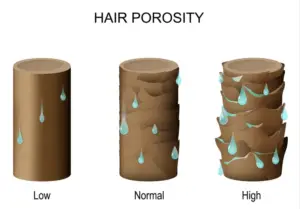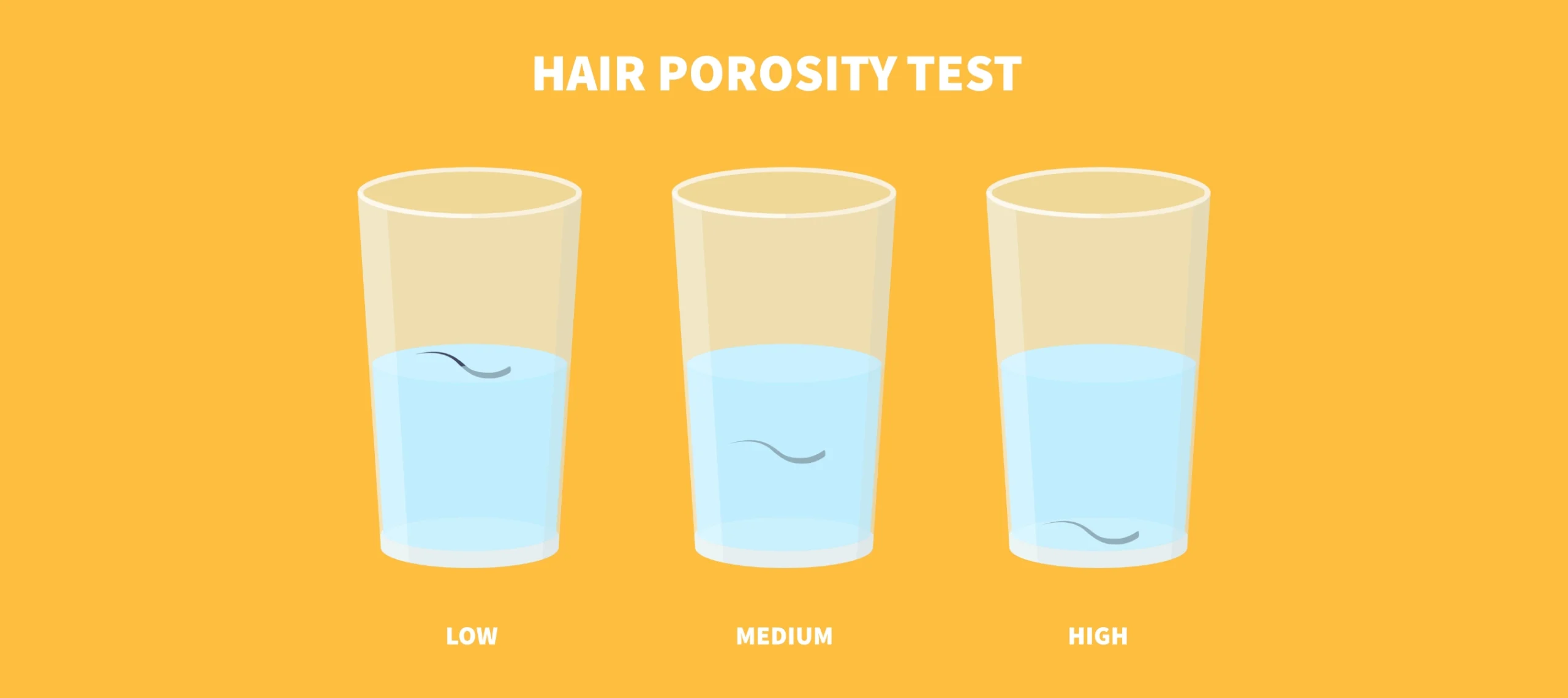Our African black hair is characterized by its diverse textures and unique needs, requires special routines to care for them to get the best results for a healthy hair and how to retain your length.
Central to this care is understanding hair porosity; this just means the ability of the hair to absorb and retain moisture. Porosity plays an important role on how products interact with the hair and influences overall hair health. So let’s look at how black hair porosity types, and maintenance regimes using our products to promote length retention.
Understanding Black Hair Porosity:
Porosity refers to the hair’s ability to absorb and retain moisture, its as simple as that, but you should know that our black hair has 3 different types of porosity:

1. Low Porosity Hair:
o Characteristics: Low porosity hair has a tightly bound cuticle layer, making it difficult for moisture to penetrate. As a result, it often feels dry and may be prone to product buildup.
o Care Regimen: Focus on methods to open the cuticle layer to allow moisture absorption; an important tip is to apply products when your hair is wet and warm. Heat can lift the hair cuticle, allowing oils and moisture to more easily penetrate the hair shaft.
2. Medium Porosity Hair:
o Characteristics: Medium porosity hair has a moderately open cuticle layer, allowing moisture to enter and exit the hair shaft relatively easily. It retains moisture well and is less prone to damage.
o Care Regimen: Maintain moisture balance while preventing excessive moisture loss. Avoid over-washing, this will remove all natural oils and further damage your hair. Conditioning: Deep conditioning is crucial for locking in moisture and repairing damaged strands; our DEEP MOISTURIZING CONDITIONERS which has ingredients like shea butter and coconut oil, to help give you that proper hydration needed for your hair.
3. High Porosity Hair:
o Characteristics: High porosity hair has gaps and holes in the cuticle layer, causing moisture to enter and exit the hair shaft quickly. This type of hair tends to be dry, frizzy, and prone to breakage.
o Care Regimen: Focus on methods to reduce moisture loss and strengthen the hair shaft, by having: regular trimming, deep conditioning, protein treatment, low heat styling. however, Protein treatment is the KEY maintenance method for this porosity type; protein treatments are crucial for high porosity hair, as they help repair and strengthen the hair shaft, minimizing gaps in the cuticles. Our PROTEIN TREATMENT contains hydrolyzed soy protein which will help you achieve just that.
Hair Care Regimen for Different Porosity Types:

Low Porosity Hair: Low porosity hair requires techniques to open the cuticle layer and facilitate moisture absorption.
1. Shampoo:
o Use BUSKAM Organics Sulfate-Free Moisturizing Shampoo to gently cleanse the scalp without stripping natural oils. Concentrate on removing buildup.
2. Conditioner:
o Apply BUSKAM Organics Rinse out Moisturizing Conditioner to the lengths and ends, focusing on hydrating the hair. Detangle gently with a wide-tooth comb.
3. Deep Conditioning:
o Incorporate weekly deep conditioning with BUSKAM Organics Deep Conditioner. Use heat to help open the cuticle and enhance moisture absorption.
4. Moisturizing:
o Apply BUSKAM Organics Spray-on Leave-In Conditioner to damp hair to seal in moisture.
5. Styling:
o Choose water-based styling products such as BUSKAM Organics Peppermint Butter without weighing down the hair. Avoid heavy creams or butters.
Medium Porosity Hair: Medium porosity hair requires maintenance to retain moisture balance and prevent excessive moisture loss.
1. Shampoo:
o Use BUSKAM Organics Sulfate-Free Moisturizing Shampoo to cleanse gently, focusing on the scalp. Rinse thoroughly to avoid buildup.
2. Conditioner:
o Apply BUSKAM Organics Rinse out Moisturizing Conditioner from mid-length to ends. Allow it to sit for a few minutes before rinsing to maximize moisture absorption.
3. Deep Conditioning:
o Deep condition with BUSKAM Organics Deep Conditioner bi-weekly to maintain moisture balance and prevent dryness and breakage.
4. Moisturizing:
o Apply BUSKAM Organics Spray-on Leave-In Conditioner to damp hair to seal in moisture.
5. Styling:
o Opt for BUSKAM Organics Peppermint Butter . Avoid heavy styling products that can lead to buildup.
High Porosity Hair: High porosity hair requires techniques to reduce moisture loss and strengthen the hair shaft.
1. Shampoo:
o Use BUSKAM Organics Sulfate-Free Moisturizing Shampoo to cleanse gently, focusing on the scalp while avoiding over-washing.
2. Conditioner:
o Apply BUSKAM Rinse Out Moisturizing Conditioner generously, focusing on the ends. Leave it on for an extended period or use a shower cap for deeper penetration.
3. Deep Conditioning:
o Deep condition with BUSKAM Organics Deep Conditioner weekly to replenish moisture and repair damage. Incorporate BUSKAM Organics Protein Treatments to strengthen the hair shaft.
4. Moisturizing:
o Apply BUSKAM Organics Spray-on Leave-In Conditioner to damp hair, followed by a heavier oil like castor or shea butter to seal in moisture and provide extra nourishment, you can find both of these butters in the BUSKAM Organics Peppermint Butter
5. Styling:
o Use BUSKAM Organics Peppermint Butter for added moisture . Minimize heat styling and protect hair with a heat protectant spray when necessary.
6. Protein treatment:
o Use BUSKAM Organics Protein Treatment to help repair and strengthen the hair shaft, minimizing gaps in the cuticles for more moisture.
Understanding and addressing black hair porosity is essential for maintaining healthy hair and promoting length retention. By tailoring your hair care regimen to your hair’s specific porosity type and using products from BK Organics, you can effectively manage moisture levels, prevent damage, and achieve optimal hair health. With consistency and proper care, you can nurture your black hair to thrive and flourish.
Your hair is your crown, your hairitage, so be bold, be confident, be #BONFIDENT”

